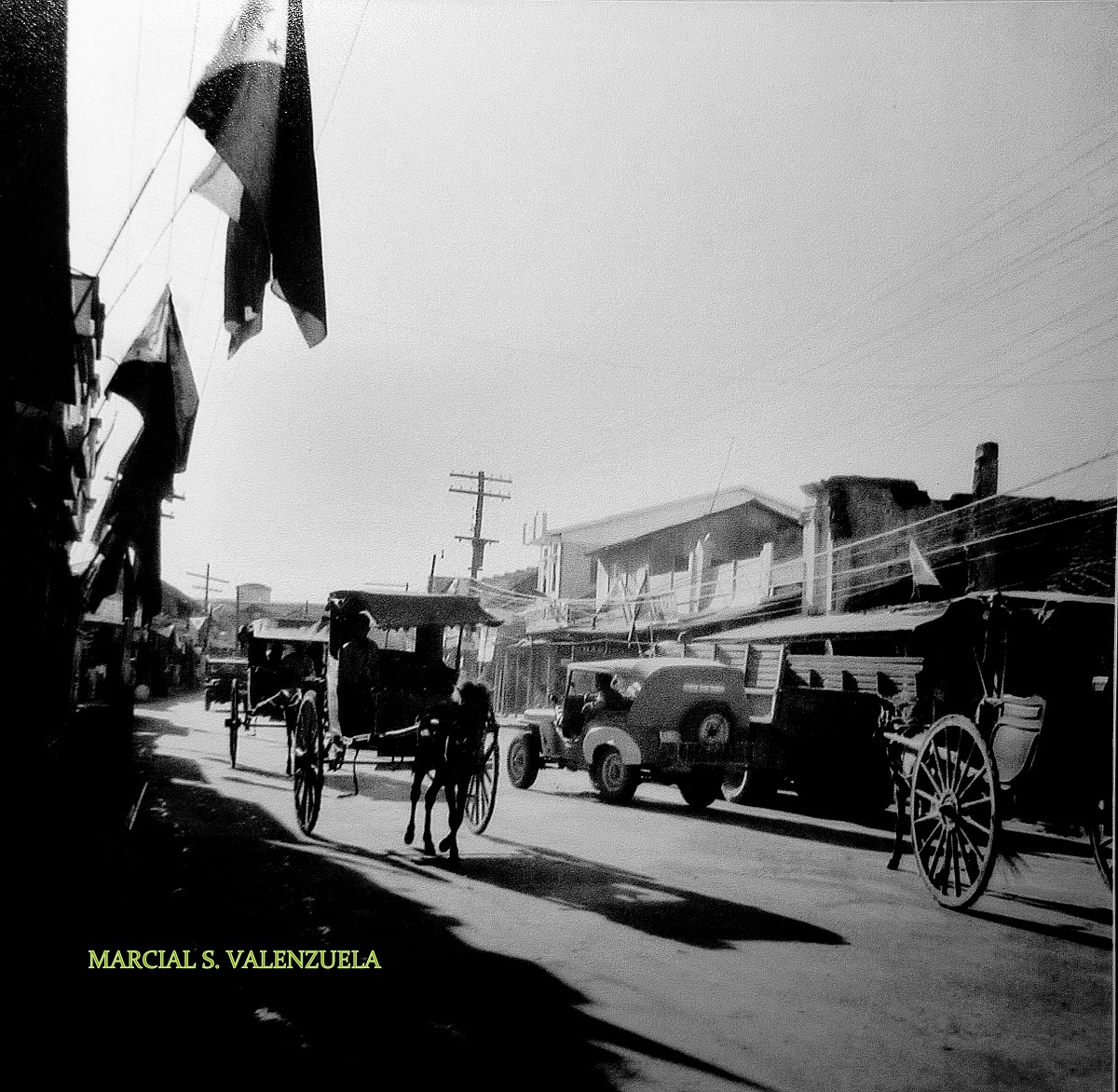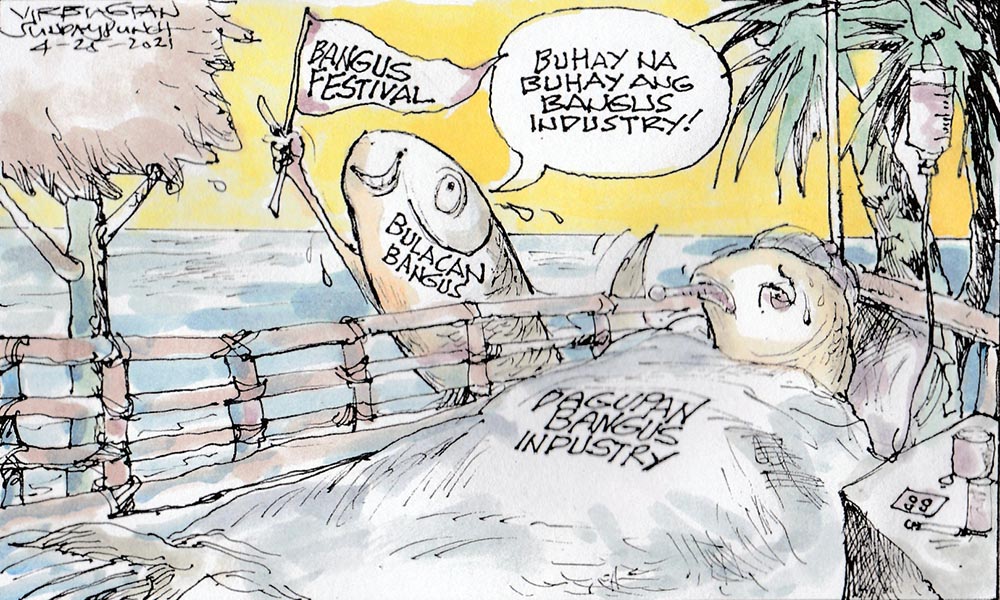
DAGUPAN CITY THEN AND NOW
By Art G. Valenzuela

A SAILBOAT (paraw) at “Babaliwan” (today referred to as NBI-LTO area) with bags of salt from western Pangasinan is captured in this 1967 photo about to dock at a small wharf. This was a typical scene in that part of Dagupan City back in the 1940s to the 1960s. Shown in the far distance are Barangays Carael and Calmat. Another landing site of salt was at Bonoan Gueset near the old Seaside Canteen (circa 1963) where my friend from Manila “Mang Iking,” used to manage a large salt storage warehouse owned by the Araneta family of Cubao. The word Pangasinan was derived from the root word “asinan,” which local historian Resty Basa wrote in one of his articles. (Photo by Dean Marcial S. Valenzuela)

DOWNTOWN DAGUPAN CITY 1947. The city proudly flies the national colors on the day of its charter and inauguration of the first set of elected city officials. My father, photojournalist Marcial S. Valenzuela (on assignment for The Manila Times) must have taken this photo at the corner of Rizal Street and then Torres Bugallon Avenue (now A. B. Fernandez Avenue). Notice the water tank left portion of the photo towering over the smaller buildings. Notice, too the “calesas” which were the mode of public transport at that time. A modified private jeep is also shown in the photo. Would you know what the truck in the photo is carrying?

DAGUPAN BANGUS FESTIVAL. Third photo shows participants in dazzling costumes performing their choreographed number during the city’s street dancing competition which was a much-anticipated highlight of the annual Dagupan Bangus Festival and “Pistay Dayat” in the month of May. This year, 2021, would be the second time in a row that the city shall be missing this colorful event owing to the endless restrictions resulting from the pandemic. A large crowd of adoring fans is shown capturing the moment in mobile phone cameras and sharing their photos across the globe on social media.

DAGUPAN CITY’S DOWNTOWN FLOODS. Fourth photo shows part of the downtown area of the city submerged in floodwater which has become a perennial and nasty problem for the city. It will be recalled that the elevation of the city is currently very low and prone to flooding at high tide. This situation is compounded by the rising level of the seas and oceans worldwide resulting from the melting of polar caps. Flood or no flood, the city has rapidly taken gigantic leaps in its economic growth since its charter in 1947 and is considered as the unofficial “depository” of the wealth of the entire province of Pangasinan, the richest province in Region 1.










